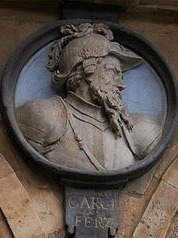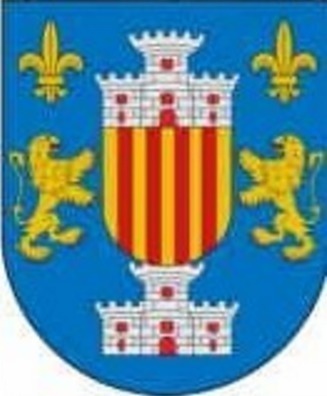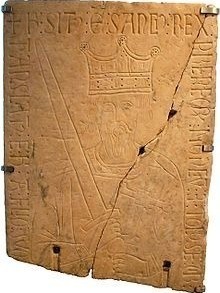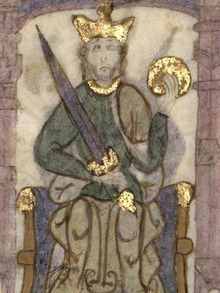Stamboom Snelder - Versteegh » Queen Muniadonna of Castille (± 985-1017)
Persoonlijke gegevens Queen Muniadonna of Castille
Bronnen 1, 2- Zij is geboren rond 985 in Castile, Spain.
- Zij is overleden in het jaar 1017. Zij was ongeveer 31-32 jaar oud.
- Een kind van Sancho García of Castille en Urraca Gómez
Gezin van Queen Muniadonna of Castille
Zij is getrouwd met Sancho III of Pamplona.
Zij zijn getrouwd in het jaar 1001.
Kind(eren):
Notities over Queen Muniadonna of Castille
<p><strong><a href="https://en.wikipedia.org/wiki/Muniadona_of_Castile">https://en.wikipedia.org/wiki/Muniadona_of_Castile<;/a></strong></p> <p> </p> <p&;gt;<strong>Muniadona of Castile</strong> (<abbr title="circa">c.</abbr><span> 995</span> – 1066), also called <strong>Mayor</strong> or <strong>Munia</strong>, was <a title="List of Navarrese consorts" href="https://en.wikipedia.org/wiki/List_of_Navarrese_consorts">Queen consort of Pamplona</a> (1011 – 1035) by her marriage with King <a title="Sancho III of Pamplona" href="https://en.wikipedia.org/wiki/Sancho_III_of_Pamplona">Sancho Garcés III</a>, who later added to his domains the Counties of Ribagorza (1017) and Castile (1028) using her dynastic rights to these territories.</p> <p>Eldest child and daughter of the <a title="Sancho García of Castile" href="https://en.wikipedia.org/wiki/Sancho_Garc%C3%ADa_of_Castile">Sancho García, Count of Castile</a> and his wife Urraca,<sup id="cite_ref-FOOTNOTEMartínez_Diez200750_1-0" class="reference"><a href="https://en.wikipedia.org/wiki/Muniadona_of_Castile#cite_note-FOOTNOTEMart%C3%ADnez_Diez200750-1">[1]</a></sup> probably a member of the <a title="Banu Gómez" href="https://en.wikipedia.org/wiki/Banu_G%C3%B3mez">Banu Gómez</a> family,<sup id="cite_ref-FOOTNOTESalazar_y_Acha200637–38_2-0" class="reference"><a href="https://en.wikipedia.org/wiki/Muniadona_of_Castile#cite_note-FOOTNOTESalazar_y_Acha200637%E2%80%9338-2">[2]</a></sup> ;she married King Sancho Garcés III of Pamplona before 27 June 1011 when both appear confirming certain privileges of the <a title="Monasteries of San Millán de la Cogolla" href="https://en.wikipedia.org/wiki/Monasteries_of_San_Mill%C3%A1n_de_la_Cogolla">Monastery of San Millán</a>.<sup id="cite_ref-FOOTNOTEMartínez_Diez200747_3-0" class="reference"><a href="https://en.wikipedia.org/wiki/Muniadona_of_Castile#cite_note-FOOTNOTEMart%C3%ADnez_Diez200747-3">[3]</a></sup></p> <p>In 1017, <a title="William Isarn" href="https://en.wikipedia.org/wiki/William_Isarn">William Isarn</a>, <a class="mw-redirect" title="Count of Ribagorza" href="https://en.wikipedia.org/wiki/Count_of_Ribagorza">Count of Ribagorza</a> was assassinated during an expedition to the <a title="Val d'Aran" href="https://en.wikipedia.org/wiki/Val_d%27Aran">Val d'Aran</a>.<sup id="cite_ref-FOOTNOTEMartínez_Diez200765_4-0" class="reference"><a href="https://en.wikipedia.org/wiki/Muniadona_of_Castile#cite_note-FOOTNOTEMart%C3%ADnez_Diez200765-4"&;gt;[4]</a></sup> William's illegitimacy had resulted in his claim to the county being challenged, and it had been partitioned between him and his cousin Mayor García, daughter of <a title="García Fernández of Castile" href="https://en.wikipedia.org/wiki/Garc%C3%ADa_Fern%C3%A1ndez_of_Castile">García Fernández of Castile</a> by William's aunt, Ava de Ribagorza, along with her husband Count <a title="Raymond III of Pallars Jussà" href="https://en.wikipedia.org/wiki/Raymond_III_of_Pallars_Juss%C3%A0">Raymond III of Pallars Jussà</a>. William's death without heirs led Mayor and Raymond to claim the entire county, but this was contested by Sancho Garcés III of Pamplona, asserting the dynastic rights of his wife Muniadona, who as eldest daughter of Mayor's brother, Count Sancho García, could claim to be the rightful heiress of her grandmother Ava, and hence of Ava's father Count Raymond II of Ribagorza.<sup id="cite_ref-FOOTNOTEMartínez_Diez200783_5-0" class="reference"><a href="https://en.wikipedia.org/wiki/Muniadona_of_Castile#cite_note-FOOTNOTEMart%C3%ADnez_Diez200783-5">[5]</a></sup> In 1017 the troops of Sancho III invaded Ribagorza and he took control over William's half of the county, while the rest remained in the hands of Mayor García until 1025 when, having been repudiated by her husband, Mayor transferred most of the remainder to Sancho III, Raymond III only retaining the <a title="Noguera Ribagorçana" href="https://en.wikipedia.org/wiki/Noguera_Ribagor%C3%A7ana">Noguera Ribagorçana</a> basin.<sup id="cite_ref-FOOTNOTEMartínez_Diez200786_6-0" class="reference"><a href="https://en.wikipedia.org/wiki/Muniadona_of_Castile#cite_note-FOOTNOTEMart%C3%ADnez_Diez200786-6">[6]</a></sup></p> <p>Again, in 1028, Muniadona's dynastic rights were invoked. Following the assassination of Count <a title="García Sánchez of Castile" href="https://en.wikipedia.org/wiki/Garc%C3%ADa_S%C3%A1nchez_of_Castile">García Sánchez of Castile</a> by the Vela family in <a title="Kingdom of León" href="https://en.wikipedia.org/wiki/Kingdom_of_Le%C3%B3n">León</a>, Sancho III took control of Castile since his wife was the eldest sister of the late count. Their son <a title="Ferdinand I of León" href="https://en.wikipedia.org/wiki/Ferdinand_I_of_Le%C3%B3n">Ferdinand Sánchez</a> was named count in 1029.<sup id="cite_ref-FOOTNOTEMartínez_Diez200784_7-0" class="reference"><a href="https://en.wikipedia.org/wiki/Muniadona_of_Castile#cite_note-FOOTNOTEMart%C3%ADnez_Diez200784-7">[7]</a></sup><span>.</span></p> <p&;gt;Muniadona outlived her husband and most of her children, except perhaps Jimena who was still alive in December 1063.<sup id="cite_ref-FOOTNOTEMartínez_Diez2007173_8-0" class="reference"><a href="https://en.wikipedia.org/wiki/Muniadona_of_Castile#cite_note-FOOTNOTEMart%C3%ADnez_Diez2007173-8">[8]</a></sup> After the death of her husband in 1035, Muniadona founded the <a title="San Martín de Tours de Frómista" href="https://en.wikipedia.org/wiki/San_Mart%C3%ADn_de_Tours_de_Fr%C3%B3mista">monastery of San Martín de Tours de Frómista</a>, and in her testament dated 13 June 1066,<sup id="cite_ref-FOOTNOTEMartínez_Diez2007173_8-1" class="reference"><a href="https://en.wikipedia.org/wiki/Muniadona_of_Castile#cite_note-FOOTNOTEMart%C3%ADnez_Diez2007173-8">[8]</a></sup> she requested to be buried there.<sup id="cite_ref-FOOTNOTEPérez_Celada1986Doc._4,_pp._11–13_9-0" class="reference"><a href="https://en.wikipedia.org/wiki/Muniadona_of_Castile#cite_note-FOOTNOTEP%C3%A9rez_Celada1986Doc._4,_pp._11%E2%80%9313-9">[9]</a></sup> She probably died shortly after executing her last will.<sup id="cite_ref-FOOTNOTEMartínez_Diez2007166_10-0" class="reference"><a href="https://en.wikipedia.org/wiki/Muniadona_of_Castile#cite_note-FOOTNOTEMart%C3%ADnez_Diez2007166-10">[10]</a></sup></p> <p>Her last will also "determined the definitive transfer of the horses that she had lent to those who enjoyed them until then. She also freed the <a title="Saracen" href="https://en.wikipedia.org/wiki/Saracen">Saracens</a> who had converted to Christianity that were under her dependence. In addition, she declared the monastery of San Martín de Tours de Frómista owner of the estates that it had been exploiting and gave it other properties in <a title="Bobadilla, La Rioja" href="https://en.wikipedia.org/wiki/Bobadilla,_La_Rioja">Bobadilla</a> and Agero, the thirds of the tithes of <a title="Frómista" href="https://en.wikipedia.org/wiki/Fr%C3%B3mista">Frómista</a> and <a title="Población de Campos" href="https://en.wikipedia.org/wiki/Poblaci%C3%B3n_de_Campos">Población de Campos</a>, as well as a half meadow and a <em>serna</em> ;in Villota. She also divided her sheep, cows and horses in Frómista among the ecclesiastical centers of Santa María, San Juan Bautista and San Martín, and the cows she had in <a title="Asturias" href="https://en.wikipedia.org/wiki/Asturias">Asturias</a>among the place of her burial, the monastery of San Martín de Tours de Frómista and the three monks who were in charge of praying for her soul".<sup id="cite_ref-FOOTNOTEPérez_Celada1986Doc._4,_pp._11–13_9-1" class="reference"><a href="https://en.wikipedia.org/wiki/Muniadona_of_Castile#cite_note-FOOTNOTEP%C3%A9rez_Celada1986Doc._4,_pp._11%E2%80%9313-9">[9]</a></sup></p&;gt; <p>From her marriage to King Sancho Garcés were born:<sup id="cite_ref-12" class="reference"><a href="https://en.wikipedia.org/wiki/Muniadona_of_Castile#cite_note-12">[a]</a></sup></p> <ul> <li><a class="mw-redirect" title="García Sánchez III of Navarre" href="https://en.wikipedia.org/wiki/Garc%C3%ADa_S%C3%A1nchez_III_of_Navarre">García Sánchez III</a>,<sup id="cite_ref-FOOTNOTESánchez_Candeira199944_13-0" class="reference"><a href="https://en.wikipedia.org/wiki/Muniadona_of_Castile#cite_note-FOOTNOTES%C3%A1nchez_Candeira199944-13">[12]</a></sup><sup id="cite_ref-FOOTNOTEMartínez_Diez2007152_14-0" class="reference"><a href="https://en.wikipedia.org/wiki/Muniadona_of_Castile#cite_note-FOOTNOTEMart%C3%ADnez_Diez2007152-14"&;gt;[13]</a></sup> nicknamed "the one from <a title="Nájera" href="https://en.wikipedia.org/wiki/N%C3%A1jera">Nájera</a>", <a class="mw-redirect" title="Kingdom of Pamplona" href="https://en.wikipedia.org/wiki/Kingdom_of_Pamplona">King of Pamplona</a> from 1035 until his death in 1054 and married to <a title="Stephanie, Queen of Navarre" href="https://en.wikipedia.org/wiki/Stephanie,_Queen_of_Navarre">Stephanie of Foix</a>.</li> <li><a title="Ferdinand I of León" href="https://en.wikipedia.org/wiki/Ferdinand_I_of_Le%C3%B3n">Fernando Sánchez</a>,<sup id="cite_ref-FOOTNOTESánchez_Candeira199944_13-1" class="reference"><a href="https://en.wikipedia.org/wiki/Muniadona_of_Castile#cite_note-FOOTNOTES%C3%A1nchez_Candeira199944-13">[12]</a></sup><sup id="cite_ref-FOOTNOTEMartínez_Diez2007152_14-1" class="reference"><a href="https://en.wikipedia.org/wiki/Muniadona_of_Castile#cite_note-FOOTNOTEMart%C3%ADnez_Diez2007152-14">[13]</a></sup> <a title="Kingdom of León" href="https://en.wikipedia.org/wiki/Kingdom_of_Le%C3%B3n">King of León</a> married to <a title="Sancha of León" href="https://en.wikipedia.org/wiki/Sancha_of_Le%C3%B3n">Sancha of León</a>.</li> <li><a title="Gonzalo of Sobrarbe and Ribagorza" href="https://en.wikipedia.org/wiki/Gonzalo_of_Sobrarbe_and_Ribagorza">Gonzalo Sánchez</a>,<sup id="cite_ref-FOOTNOTESánchez_Candeira199944_13-2" class="reference"><a href="https://en.wikipedia.org/wiki/Muniadona_of_Castile#cite_note-FOOTNOTES%C3%A1nchez_Candeira199944-13">[12]</a></sup><sup id="cite_ref-FOOTNOTEMartínez_Diez2007152_14-2" class="reference"><a href="https://en.wikipedia.org/wiki/Muniadona_of_Castile#cite_note-FOOTNOTEMart%C3%ADnez_Diez2007152-14">[13]</a></sup> petty King of <a title="County of Ribagorza" href="https://en.wikipedia.org/wiki/County_of_Ribagorza">Sobrarbe and Ribagorza</a>.</li> <li>Jimena Sánchez, <a title="Kingdom of León" href="https://en.wikipedia.org/wiki/Kingdom_of_Le%C3%B3n">queen consort of León</a> by her marriage to <a title="Bermudo III of León" href="https://en.wikipedia.org/wiki/Bermudo_III_of_Le%C3%B3n">Bermudo III</a>.<sup id="cite_ref-FOOTNOTESalazar_y_Acha1988183–192_15-0" class="reference"><a href="https://en.wikipedia.org/wiki/Muniadona_of_Castile#cite_note-FOOTNOTESalazar_y_Acha1988183%E2%80%93192-15">[14]</a></sup><sup id="cite_ref-FOOTNOTEMartínez_Diez2007166_10-1" class="reference"><a href="https://en.wikipedia.org/wiki/Muniadona_of_Castile#cite_note-FOOTNOTEMart%C3%ADnez_Diez2007166-10">[10]</a></sup></li> </ul>
Tijdbalk Queen Muniadonna of Castille
Deze functionaliteit is alleen beschikbaar voor browsers met Javascript ondersteuning.
Klik op de namen voor meer informatie.
Gebruikte symbolen:  grootouders
grootouders
 ouders
ouders
 broers/zussen
broers/zussen
 kinderen
kinderen
 grootouders
grootouders
 ouders
ouders
 broers/zussen
broers/zussen
 kinderen
kinderen
Voorouders (en nakomelingen) van Muniadonna of Castille
Muniadonna of Castille 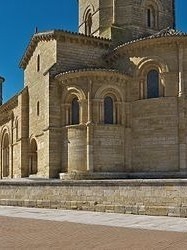 | ||||||||||||||||||||||||||||||||||||
1001 | ||||||||||||||||||||||||||||||||||||
Sancho III of Pamplona | ||||||||||||||||||||||||||||||||||||
Bronnen
- WikiTree, via https://www.myheritage.nl/research/colle...
Queen Nunnia of Navarre (geboren Princess of Castile)<br>Geslacht: Vrouw<br>Geboorte: Ongeveer 985 - Castile, Spain<br>Huwelijk: 1001<br>Echtgenoot: Sancho III King of Navarre<br>Kind: Fernando I King of Castile and Leon
www.wikitree.com
- Snelder-Versteegh Web Site, roel snelder, via https://www.myheritage.nl/person-2100182...
Persoon toegevoegd door het bevestigen van een Smart Match
Stambomen op MyHeritage
Familiesite: Snelder-Versteegh Web Site
Familiestamboom: 388366452-1
Over de familienaam Of Castille
- Bekijk de informatie die Genealogie Online heeft over de familienaam Of Castille.
- Bekijk de informatie die Open Archieven heeft over Of Castille.
- Bekijk in het Wie (onder)zoekt wie? register wie de familienaam Of Castille (onder)zoekt.
De publicatie Stamboom Snelder - Versteegh is opgesteld door Roel Snelder.
Wilt u bij het overnemen van gegevens uit deze stamboom alstublieft een verwijzing naar de herkomst opnemen:
Roel Snelder, "Stamboom Snelder - Versteegh", database, Genealogie Online (https://www.genealogieonline.nl/stamboom-snelder-versteegh/I506980.php : benaderd 16 mei 2024), "Queen Muniadonna of Castille (± 985-1017)".
Roel Snelder, "Stamboom Snelder - Versteegh", database, Genealogie Online (https://www.genealogieonline.nl/stamboom-snelder-versteegh/I506980.php : benaderd 16 mei 2024), "Queen Muniadonna of Castille (± 985-1017)".
